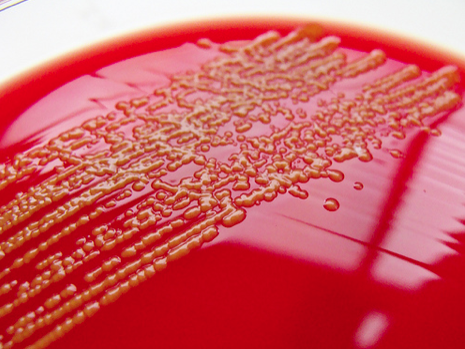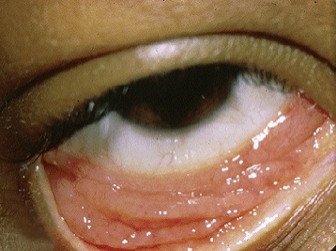This website uses cookies so that we can provide you with the best user experience possible. Cookie information is stored in your browser and performs functions such as recognising you when you return to our website and helping our team to understand which sections of the website you find most interesting and useful.
A Guide to Discharge from Chlamydia
[social_share/]
Chlamydia is often thought of as being a silent illness that doesn’t show much in the way of symptoms or signs of infection. However, there are some things that you can look out for or use as a possible sign that might have fallen foul of the Chlamydia infection.

Discharge can actually be helpful in diagnosing Chlamydia
Knowing your body is important and will help you to spot when something is different for you. Some kinds of discharge are quite normal and part of your body’s way of keeping itself clean, healthy and in good working order. However, when you get an infection the kinds of discharge you get can start to change and keeping an eye out for that can be a key indicator of an underlying problem that needs to be sorted out.
What is Chlamydia?
Chlamydia is an infection caused by bacteria called Chlamydia Trachomatis. It’s a tiny micro-organism of the same kind that causes chest or ear infections but is a specific kind that tends to be passed on through sexual contact. The bacteria live in the body and multiply once passed on, with the effect of that being an infection that causes the body to react in a number of ways.
Part of the problem with picking up a Chlamydia infection is the fact that it quite often lies dormant in the body for a considerable period of time before developing any kinds of signs or symptoms (14 Signs of Chlamydia) that it’s even there. However, once it does start to give an indication that it is present in the body, it’s important to get it treated as soon as possible as it can have some pretty unpleasant effects.
If left untreated, one of the most devastating effects of the Chlamydia infection is infertility. Sometimes, the first sign that a woman gets that she has the infection is widespread lower abdominal pain, which can be an indicator of Pelvic Inflammatory Disease or PID. This disease and the inflammation that it causes can make the linings of many parts of the reproductive system sticky and makes them adhere to one another. Blocked fallopian tubes, a stuck-together uterus and a range of other adhesions can make it difficult or even impossible to become pregnant
Women are not the only ones who can be left infertile by Chlamydia. If the infection takes hold in the testicles, it can lead to a condition called orchiditis. The swelling, which comes with considerable pain, can damage the tissue that creates the sperm in the testicles and cause male infertility.
Chlamydia doesn’t just infect the genitals. It’s possible to get the infection in the throat through oral sex or if infected bodily fluids make it into the eyes. This can cause Chlamydial conjunctivitis or a range of other infections such as throat or sinus infections that don’t clear with the usual antibiotic (13 Use of Azithromycin in Chlamydia) treatments.
Discharge in women
For women, discharge from a Chlamydia infection is likely to come in the form of vaginal discharge. This is where it pays to be in touch with what is normal for your body. All women experience some form of discharge as the vagina cleans itself and keeps itself in optimum health and any change to this normal discharge can be a sign that something is wrong that needs to be investigated.

If your underwear looks like this, you probably need to see a doctor
Normal vaginal discharge varies between different women, but is normally clear, thin and watery, or slightly jelly-like in texture. This can change throughout the monthly cycle for women who are having periods and be slightly darker coloured as menstruation approaches.
If the infection is somewhere in the reproductive tract, vaginal discharge can change. While normal vaginal discharge is typically clear, discharge from an infection is more cloudy or milky in colour. This is because of the white blood cells the body sends to fight the infection being passed out of the body, which leave a colouration in the mucus.
If the infection has affected the cervix or uterus, you may also notice spotting between periods. This could be anything from slightly darker discharge like the type you get close to your period or even spots of blood when you’re not expecting your period.
Discharge in men
For most men who experience discharge, this comes from the tip of the penis. The only usual discharge experienced by men happens when they are aroused, when small amounts of lubricating semen can leak from the tip. However, when not aroused there is not usually any kind of leakage or discharge.

Discharge is not normal for men
If you have a Chlamydia infection, you may notice a discharge from the tip of the penis when not aroused. It’s only likely to be a little, a few drops, but will be cloudy or milky in colour. This is due to the body passing out the dead white cells and bacteria as it tries to fight the infection.
Any kind of discharge from the penis is cause for concern and should be checked out by your doctor or at the sexual health clinic. Even if it’s not the Chlamydia infection, it could be an indication that something else isn’t right.
Other types of discharge
As discussed in the section above, the genitals are not the only places on the body that can be affected by the Chlamydia infection. You may also experience discharge from other areas that have become infected and this can be a sign that you need to get tested for Chlamydia.

Infection in the eye can cause a yellowish discharge
It is possible to pass on the Chlamydia infection through anal sex, with the bacteria being deposited in the rectum. This is a good place for the bacteria to colonise, being warm, moist and very conducive to bacterial reproduction. If you think you might have an infection here, you may notice discharge from the anus. This is likely to be milky as well, like discharge from the penis or vagina, or may manifest itself as mucous on or in your stools (poo). If you notice this as well as any pain when going to the toilet, a swab of your anus and rectum will help to diagnose the infection and get you started on treatment.
There can also be discharge with a Chlamydial eye infection. In addition to blistering and reddening of the eye and area inside the lower and upper lids, the infection can cause a yellowish discharge from the eye. This isn’t uncommon of many eye infections, but if it doesn’t clear up with the usual treatments such as anti-bacterial and antibiotic eye drops, a swab can be taken from the eye and tested in the laboratory to check whether it is Chlamydia rather than one of the other common eye infections.
Conclusion
Chlamydia is a tricky thing to spot, particularly when it tends to go so long without developing any symptoms (3 Chlamydia symptoms). However, if those symptoms do develop they are likely to produce some kind of discharge as a result of the body’s natural defence mechanisms against infection.
If you experience any kind of discharge, be it genital, anal or from the eyes, that it out of the ordinary for you, you should get this checked out by the doctor. Discharge, aside from the normal process of keeping a vagina healthy, is usually a sign of some kind of underlying problem that needs to be addressed as soon as possible.
Image Credits: Nathan Reading, Wm Jas and Wikipedia



